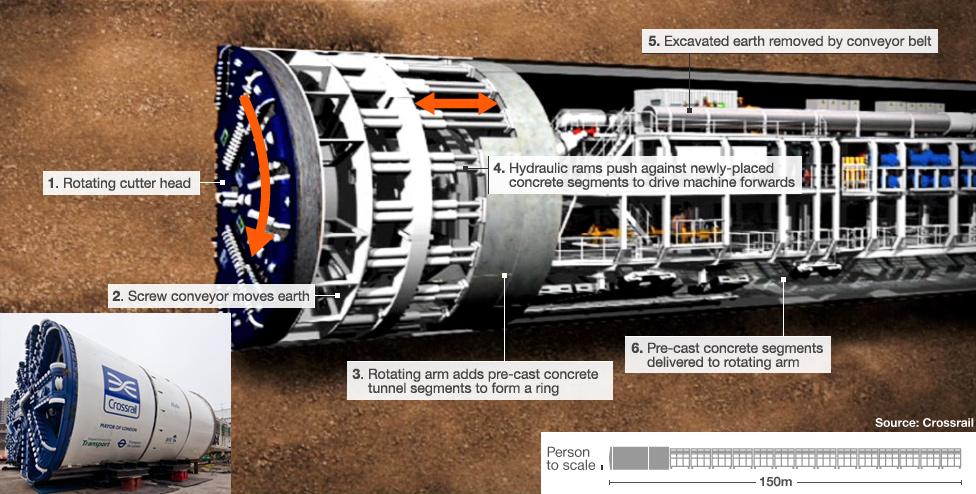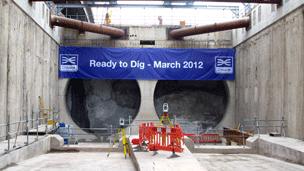'Metal moles' begin work below London
- Published
Tunnelling work is about to begin on a grand scale in London as the £16bn Crossrail project gets set to build 26 miles (42km) of tunnels beneath the capital.
The first of eight highly specialised Tunnel Boring Machines (TBM), which each weigh nearly 1,000 tonnes, is being positioned at Royal Oak in west London. From here it will begin its slow journey east, as it carves out a new east-west underground link. The scheme is currently the largest civil engineering project in Europe.

Described by Boris Johnson as "voracious worms nibbling their way under London", the 150-metre long machines will take three years to build a network of tunnels beneath the city's streets.

Tunnelling will start from the newly-constructed portal at Royal Oak
While tunnelling the TBMs will operate 24 hours a day and move through the earth at a rate of about 100m per week.
Each one is staffed by a 20-strong "tunnel gang" and comes with its own kitchen and toilet.
The machines are monitored from a surface control room which tracks their positions using GPS.
Hydraulic rams at the front keep the 980-tonne machines within millimetres of their designated routes.
A TBM will set you back about £10m.
Once their work is finished, the machines will be sold back to their German manufacturer Herrenknecht and refurbished for further use.

The TBMs will have to navigate London's existing subterranean infrastructure, including sewers, some 10 Tube lines and the Blackwall and Limehouse link road tunnels.
At the deepest point the machines will be travelling about 40m below ground.

The Crossrail scheme was first proposed in the mid 1970s, although plans to build full-size railways through central London were also drawn up after World War II.
When complete by 2018, the line will pass through 37 stations and run 73 miles (118km) from Maidenhead and Heathrow in the west, to Shenfield and Abbey Wood in the east.

The line is expected to carry about 200 million passengers per year and expand London's rail capacity by about 10%.
Unlike the Tube, the line's rolling stock will be the same size as mainline trains and some 1,500 passengers can be carried in each train at peak periods.
- Published29 February 2012